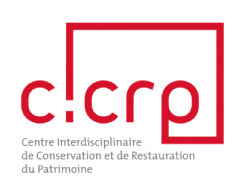Research on the phenomenon of Stegobium paniceum infestation
Duration: 2003–2010
CICRP: Katia Baslé, Nicolas Bouillon, Fabien Fohrer, Odile Guillon
Partnership(s): Institute of Archaeomaterials Research, UMR CNRS 5060, IRAMAT-CRPAA; University of Bordeaux 3; Agro Techmo Hygiene, University of Perpignan
Following serious conservation problems tied to environmental conditions, particularly the deterioration of organic material due to infestation by Stegobium paniceum, especially for easel paintings in the Mediterranean region, the CICRP has established starting from 2006 an interdisciplinary programme around four principal topics:
- The assessment of infestations and their development in painted works by a protocol of standardised photography based on the automatic counting of flight (or exit) holes by image processing.
- The identification of the most attractive formulas and ingredients using infestation tests on laboratory-made samples of relined paintings.
- The analysis of glue-pastes by GC/MS so as to correlate their attractiveness according to their chemical composition.
- The establishment of a StegoSIG geographic information system
Publications:
- Fohrer F., Basle K. and Daniel F., ‘Compréhension et analyse des phénomènes d’infestation et de réinfestation par le Stegobium paniceum des peintures de chevalet rentoilées à la colle de pâte’, Support Tracé, 2006, 6: 78–83.
- Bouillon N., Fohrer F. and Bonnafoux B., ‘Study of pest infestation of glue-paste lined easel paintings: characterization of traditional glue-paste recipes and their relevant Volatile Organic Compounds by Gas Chromatography/Mass Spectrometry’, ICOM Committee for Conservation, 15th Triennial Meeting in Delhi, India Preprints, September 2008.
- Baslé K., Bouillon N., Fohrer F., Guillon O. and May R., ‘Pour une approche raisonnée des problématiques d’infestation en milieu patrimonial : le cas du Stegobium paniceum‘, Techné 2009, no. 29.
- Baslé, K. and May, R.,: ‘StegoSIG : un système d’information géographique pour connaitre et prévenir les risques d’infestation, appliqué au milieu patrimonial’, METANIR Project under the European Programme Noé (2006–2007), 2007, pp. 71–84.


